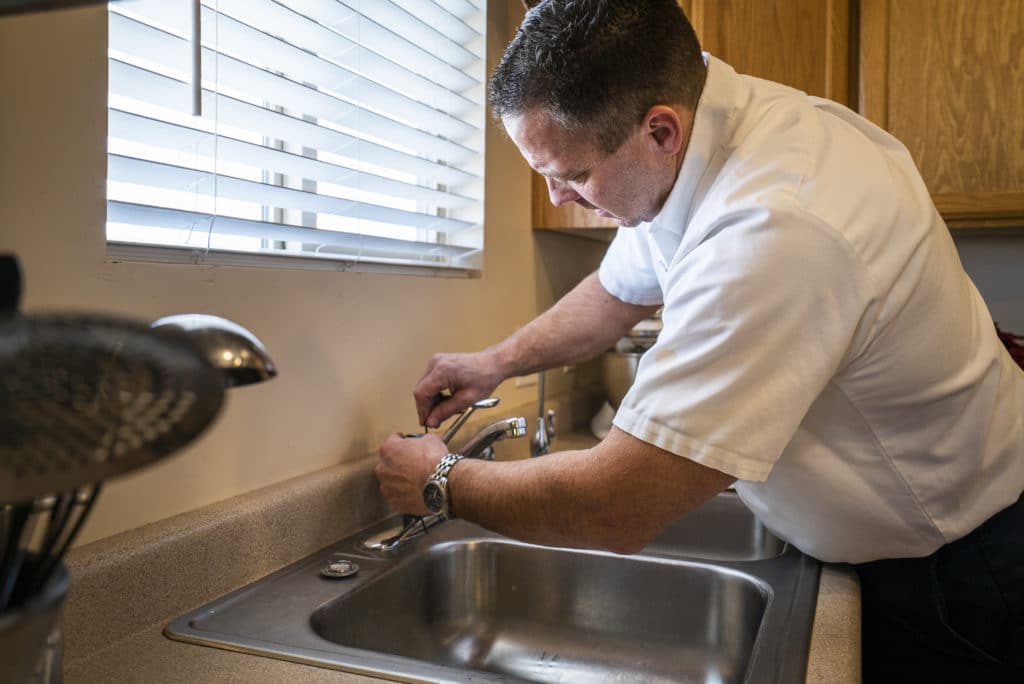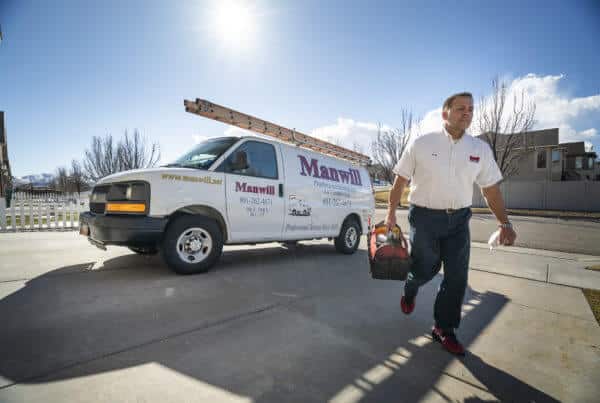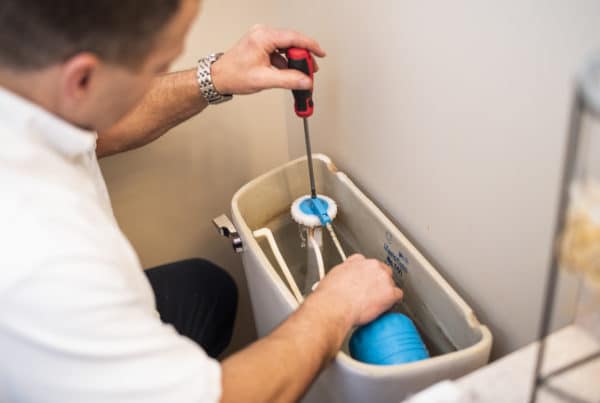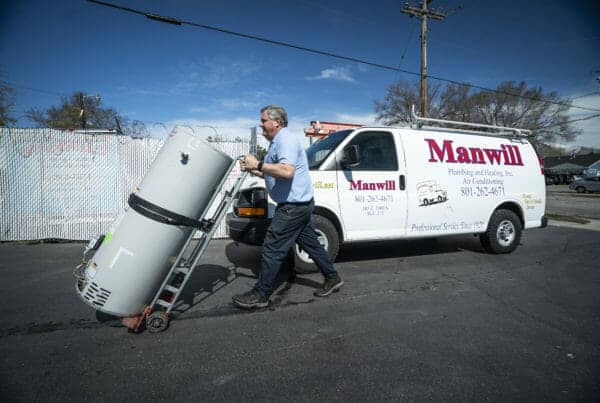
Backed up drains
Finding backed up drains in your home is never fun. Backed up drains can cause extensive property damage and lead to unexpected costly repairs.
All drains in the plumbing system have a purpose for the fixture they are connected to. Most drains are designed with a “P-trap” to stop the infiltration of sewer gases into the living space of your home through a water trap. It is designed for water to scour if used properly. However, overuse or items not intended for the sewer system can cause drains and p-traps to back up or become blocked.
Here are some recommendations that may help prevent a blocked or backed up drain:
- The sewer system is designed to handle greywater and/or black water.
- Greywater drainage can become blocked or backed up from excess hair, soap scum, or items not intended for the sewer system.
- Backed up drains usually do not start in the p-trap, but happen further down eventually making their way back to the trap.
- Maintaining drains annually with an over the counter drain cleaner or through a planned service agreement with a plumbing professional will always help prevent “normal” build up.
- Blackwater contains human bodily waste. Blockages typically come from miss-use with wet wipes, feminine hygiene products, or excessive toilet paper.
- Older main drain lines from the house to the street may experience sagging in the line over time or be damaged by tree roots.
- Using the drains and fixtures in your home frequently will help prevent drainage problems. When drains don’t get used the water will evaporate from the trap and allow sewer gas into your home. The odor is unpleasant and can leave homeowners confused as to where the stench is coming from.
- Ensure that all drains and toilets in the house don’t sit for too long without use. Make it a point to flush toilets once or twice a week and pour water into unused floor drains. This will keep the trap full of water and stop sewer gas from coming into the home.
Broken Garbage Disposals
Garbage disposals are something we don’t fully appreciate until they stop working. When working properly it can make life so much easier, but when your disposal stops doing its job it can cause frustration and disappointment.
Here are some indications that your disposal may need some attention:
- The disposal turns on, but the water is not draining out of the sink.
- Nothing happens when you flip the on/off switch
- It takes a long time to start up
- It trips the breaker
- A distinct odor is coming from the sink
If you are experiencing any of these situations, there are a few remedies that might work to get it running again.
- Before attempting any of the suggested repairs, always turn off the disposal switch and unplug the disposal from the electrical outlet under the sink. Some disposals may require you to turn off the breaker.
- Take a normal plunger and plunge the sink with the disposal “on” a couple of times. More than likely, there is a minor plug that a plunger may resolve. This is often the solution if the disposal turns on, but nothing is going down.
- Push the reset button on the bottom of the disposal. There is a little red button on the bottom of the disposal that will pop up if it trips. Try pushing it back down to reset. If it is tripped, it will make a distinctive “click” when it resets.
- Most disposals come with a tool called a disposal wrench (you can also use a 1/4-inch hex Allen wrench). On the bottom center of the disposal, there is a slot that you can insert the tool to manually turn the motor shaft. The wrench should spin with moderate force. If it doesn’t, the motor is seized up and likely will need to be replaced.
- If you’re are experiencing odors from your disposal, cutting up a lemon and putting half of it through the disposal with help clean and deodorize the disposal.
If all of the items above are checked and there is still no response from the disposal, it is likely a more serious issue and may have something to do with the toggle switch on the wall. At this point, we would recommend calling a professional, with the proper training and tools, to dig a little deeper into the problem.
Water Heater Problems
Trying to shower with no hot water is a very frustrating experience, but might be a simple repair. In Utah, there are typically two types of tank water heaters. The first and most common is a natural gas water heater. The second is an electric water heater, usually found in all-electric homes or multi-story condominiums. Tankless and indirect water heaters are also common, but normally require a professional plumber to repair because of their complexity.
Here are some items you can check before calling a plumber:
Gas Water heaters:
- Check the thermostat on the water heater. Most water heaters have a thermostat on the front. Make sure it is set to the “A” setting or “hot” setting. We often find that this gets bumped or turned down by someone and the fix is as simple as turning it back up.
- Check the pilot light. Gas water heaters still have pilot lights and most manufactures will have a sight glass to look into the burner compartment to see the pilot flame. The pilot flame is about the size of a match stick flame and should easily be seen through the sight glass. If not, follow the relighting instructions on the water heater to see if you can get it going again.
- If you find water leaking at or near the base of the water heater you may have a water pressure problem or need a new water heater. If you find this we recommend calling a professional that will have the proper training and tools to help diagnose the problem.
Electric Water heaters:
- An issue we commonly find is a tripped breaker. If you find a tripped breaker turn off then turn back on again. If the breaker stays in the “on” position wait 45 min to an hour to see if the issue has been resolved by seeing if you have hot water.
- If this does not resolve the issue, we strongly recommend calling a professional. Because of the high voltages associated with electric water heaters, they could be dangerous for someone to repair without professional training and experience.
Tankless Water heaters:
- One of the only things we would suggest trying to resolve issues with tankless water heaters is to reset the main power switch for 30 seconds to 1 minute.
- As mentioned above tankless water heaters are much more complex than tank-type water heaters. If resetting the main power witch does not resolve the issue we strongly recommend calling an experienced plumber or service person.
Leaky Toilets and Faucets
Leaking faucets and toilets are not only annoying but can be a tremendous waste of water and energy costing you money.
Here are some tips a homeowner can try to fix leaky fixtures:
- Older faucets often use washers. Replacing these may be all that is needed to fix a leaky faucet.
- Newer faucets use cartridges that operate the hot and cold side of a faucet. Replacing these cartridges might be what is needed to stop the leak.
- Fixing most leaky faucets requires only basic mechanical ability and knowledge. You can easily purchase the right replacement washers and cartridges if you know what the brand your facet is, if it has one or two handles, or if it’s a kitchen or basin type. Taking a picture of your facet with your phone can also help ensure that you get the correct parts for your specific facet.
- Plumbing supply houses, hardware stores, and the internet are easy places to find what you are looking for. Buying directly from plumbing contractors may be very helpful as well. They will probably be able to recommend the best parts and share helpful advice for the repair process.
- Most toilets still operate with the same mechanics that have been used for over 100 years. A fill valve, trip lever, and flapper are still used by many manufactures today.
- Most toilets can be repaired with universal or aftermarket replacement parts. This makes parts easy to find and, in most cases, reasonably priced.
Hopefully, these tips and suggestions can help you resolve plumbing problems as you see them in your home. If you find yourself needing some additional help remember that Manwill has over 100 years of experience in dealing with all of the plumbing problems you may have in your home. Contact us to schedule an appointment with a plumbing professional or learn more about our plumbing services here.





